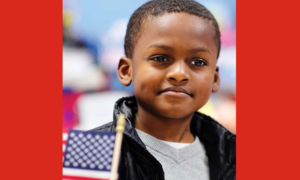Youth issues are expected to get greater attention under the Democratic Congress that will be seated in January.
As a result of the power shift created by last month’s midterm elections, key committee leaders in the 110th Congress are expected to lend a more sympathetic ear to the agendas of the major advocates in the youth field, who tend to lean to the left.
“I am cautiously optimistic with the changes from the election,” said Mala B. Thakur, executive director of the National Youth Employment Coalition, a 285-member organization that promotes youth work and education issues. “I think there will be more interest in … youth programming, social service and human service programming.”
Here’s a look at how the changes will affect youth policies and what advocates are doing to influence those policies.
Foster Care
The Republican congressional leadership was “not really that supportive of … significant improvements in child welfare,” said Tim Briceland-Betts, co-director for government affairs for the Child Welfare League of America (CWLA).
But he believes that if Rep. Charles Rangel (D-N.Y.) becomes chairman of the House Ways and Means Committee, as expected, there is apt to be “more support for child welfare issues in general, and in particular things like kinship care [and] for changing these outdated eligibility standards for federal foster care assistance.”
When Congress scrapped Aid to Families with Dependent Children (AFDC) a decade ago, replacing it with Temporary Assistance for Needy Families (TANF), it did not fine-tune the Title IV-E foster care-financing structure, which is still tied to 1996 income data. As family income has risen along with inflation, the lack of an inflation adjuster has made more kids ineligible for the federal program.
Several options have been floated to fix this problem, some of which might cost more money. While “there are many, many different ways to approach fiscal reform, it does seem as if there is [bipartisan] interest in doing so,” said Rob Geen, vice president for public policy at Child Trends. “So I would not be surprised to have that be a legislative priority in the new Congress.”
Rep. Jim McDermott (D-Wash.), a child psychiatrist who has sponsored legislation for disadvantaged children and youth, becomes the fourth-ranking Democrat on the Ways and Means panel. It’s not yet clear if he’ll chair its Human Resources subcommittee, where he served as ranking member in the 109th Congress and where foster care and other child welfare legislation will originate.
The subcommittee might also address related issues of funding and licensing for kinship caregivers, foster care caseworker support, foster youth aging out of the system, the disproportionate number of minority children in foster care and the impact of methamphetamine abuse on the child welfare system.
In the Senate, incoming Finance Committee Chairman Max Baucus (D-Mont.) and ranking member Sen. Charles Grassley (R-Iowa) are well-versed in human services issues and are expected to work together on legislation, even as Baucus takes the helm.
Education
In the House, the Education and the Workforce Committee and its probable new chairman, Rep. George Miller (D-Calif.), will drive the youth-related legislative agenda. Miller has pledged to renew the No Child Left Behind (NCLB) Act, a potential point of agreement between Democrats and President Bush.
Among other bills, Miller has sponsored legislation to reform education and child care and to improve foster care.
Renée K. Carl, director of policy and government relations with the National Collaboration for Youth, said she expects early action on NCLB. “We’re looking at how to strengthen the role of community-based organizations in partnering with public education” in general, and through 21st Century Community Learning Centers (CLCs), mentoring and service-learning programs, Carl said.
Juvenile Justice
The Juvenile Justice and Delinquency Prevention (JJDP) and Runaway and Homeless Youth acts also are up for renewal in the next Congress, and advocates see Democrats taking a different approach from Republicans. The JJDP act, created in 1974 and last renewed in 2002, authorizes grants to states that are tied to protections for youth in lockups.
The House Judiciary Committee – which shares JJDP jurisdiction with the Education panel – will probably be chaired by Rep. John Conyers (D-Mich.), who led the Democratic fight in the late 1990s against juvenile justice reform bills that he said failed to maintain protections for kids in confinement and overstated youth involvement in violent crime.
In recent years, Conyers has sponsored offender re-entry legislation, and while he was ranking member, the judiciary panel approved by voice vote the bipartisan Second Chance Act (H.R. 1704/S. 1934), an adult and juvenile offender reentry bill to fund coordinated housing, education, health, employment and mentoring services.
Democratic lawmakers tend to favor violence-reduction policies that focus on rehabilitation, prevention and early intervention. “We’re very hopeful in the 110th Congress that there’ll be more support for this type of an approach,” said Briceland-Betts of the CWLA.
The incoming Senate Judiciary Committee chairman, Sen. Patrick Leahy (D-Vt.), has worked with Sen. Arlen Specter (R-Pa.), his Republican counterpart on the panel, on youth crime prevention, supporting protections for incarcerated kids and opposing JJDP budget cuts proposed by the White House. Last year Leahy argued against Senate approval of H.R. 1279, an anti-gang bill that he said would “expand the federal government’s prosecution of juveniles as adults.”
Runaway and Homeless Youth
The lack of appropriate shelter for street youth in the 18-to-24 age bracket could come up if the next Congress attempts to reauthorize the Runaway and Homeless Youth Act, last renewed in 2003. The education panel has jurisdiction over the measure in the House, while Judiciary manages the bill in the Senate. The youth field wants legislators to give this issue a “thorough scrubbing,” said Bob Reeg, public policy director for the National Network for Youth, “without creating any negative impact on the existing runaway and homeless program structure as it stands.”
Youth Employment
Passage of legislation to raise the minimum wage to $7.25 an hour – a top priority of incoming House leaders – would have the most immediate impact on young people in the aftermath of the midterm election. Democrats have been arguing for such an increase for several years.
According to 2005 Labor Department data, about half of workers earning $5.15 (the current federal minimum wage) or less were under age 25, and about one-fourth of workers earning at or below the minimum wage were age 16 to 19.
At the National Youth Employment Coalition, Thakur hopes the new leadership can break the logjam on the reauthorization of the Workforce Investment Act (WIA), stalled since 2003, while still preserving the legislation’s separate youth funding streams and programs.
Funding Constraints
The Washington-based Afterschool Alliance used the midterm elections to survey voters on their views about after-school programming. Not surprisingly, it found that 72 percent wanted Congress to increase federal after-school funds. While NCLB authorized an increase in appropriations for Community Learning Centers, annual federal support has been stable – some say stagnant – at around $980 million in recent years.
Ron Haskins, co-director for the Center on Children and Families at the Brookings Institution, said spending issues will be central to all policy discussions. “There are lots and lots of places where kids could be hurt or helped by … social programs,” Haskins said, “and a lot of those are considered primarily in the appropriations debate.”
The exact line-up of the House and Senate appropriations subcommittees was still being determined at the end of November, although Rep. David Obey (D-Wis.) is expected to chair the full House panel and Sen. Robert Byrd (D-W.V.) was chosen to head the Senate Appropriations Committee.
The Democrats’ social agenda, however, must be reconciled with their pledges to control the $260 billion budget deficit, Haskins said, “because they either have to raise taxes or cut programs.”
Miller is “partisan” when it comes to money issues, making that – rather than the nuts and bolts of policy – the place where bipartisanship is likely to fracture, Haskins said.
The Democrats also will be motivated to renew and increase funding for Head Start – the GOP failed to get reauthorization passed by both houses – to show themselves as the early child education program’s “good stewards,” he added.
Opportunity to Educate
The work of a Federal Youth Development Council – charged with recommending improvements in disadvantaged kids’ programs – might frame the youth agenda for new members, particularly in the House, which welcomes more than three dozen freshmen members. “The new Congress will receive the reports of the council, once it’s up and running,” said Carl of the National Collaboration for Youth. That will include an interim report due the first year and a final report required after two years of council work. “We cannot assume that the people who were recently elected know our issues,” she said.
The Senate has fewer new members and many old hands taking the reins on the key committees with jurisdiction over youth-related issues. Sen. Edward Kennedy (D-Mass.), who steered NCLB through its first passage, will chair the Health, Education, Labor and Pensions (HELP) Committee.
Youth Supporters Swept Out
While some welcomed the chance to influence the crop of newcomers, many youth program supporters were swept out in the midterm elections. That includes several GOP champions of Youthbuild, the federally funded program to provide education and skills training to disadvantaged kids, said Dorothy Stoneman, president of the Boston-based YouthBuild USA, an advocacy group.
“We lost some very important Republican supporters,” she said, including Sens. Mike DeWine (Ohio), Rick Santorum (Pa.), George Allen (Va.) and Conrad Burns (Mont.), and Reps. Nancy Johnson (Conn.) and Anne Northup (Ky.). “So that’s a loss in terms of building the bipartisan support.”
After more than two years of complex negotiations, Congress recently moved Youthbuild from the Department of Housing and Urban Development to the Department of Labor, whose budget is handled by the Labor, Health and Human Services, Education and Related Agencies appropriations subcommittees. Stoneman said that while this change was worked out, Youthbuild suffered a 23 percent funding cut – from $65 million in 2004 to $50 million last year – which she attributed to confusion about where the program “was going to land.”
Stoneman’s aim is to bring Youthbuild funding back up to $65 million in the fiscal 2007 appropriations measure, which could be taken up by the lame-duck Congress this month or the new Congress in January.
“We had good support from the Republican [appropriations] chairs, and we hope we’ll get equally good support from the Democratic chairs. We see no reason why we won’t,” Stoneman said.






























